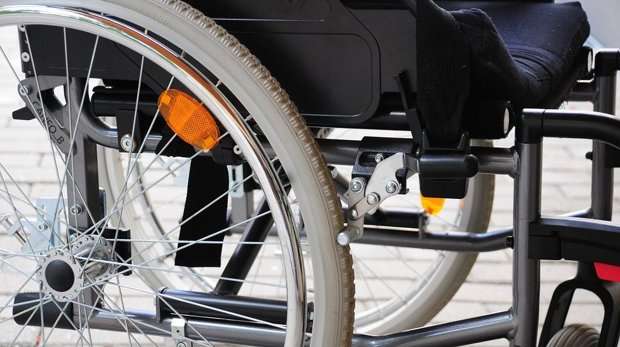

Bumps on surfaces, doorsteps or kerbs and the unsuitability of roads, pathways and buildings cause problems for wheelchair users. Wheelchair users can now use technology developed at the University of Twente to map out safe and suitable routes and avoid roads and pathways that are unsuitable. Researchers from the Pervasive Systems department at the CTIT institute (Centre for Telematics and Information Technology) developed a system for processing and analysing the sensor data that wheelchair users measure themselves using their mobile telephones.
At present, researchers are using the developed technology to determine the quality, suitability and condition of roads, pathways and buildings for wheelchair users and offer a corresponding colour-coded card. Professor Paul Havinga: “We are currently working on the development of such a card in the form of an app for the entire campus of the University of Twente. At a later stage, this app will get a special TomTom-like function for showing alternative routes for wheelchair users.”
Smartphones with GPS and vibration sensors
Researcher Fatjon Seraj: “Although wheelchairs are not equipped with sensors, users usually own a smartphone with sensors and GPS. Accelerometers and gyroscopes (a kind of compass) detect vibrations and changes in angle, and smartphones can register, process and share these details with the sensor data analytics tool we developed.” The data collected and the analysis of suitability of the roads is then available to the user in a convenient format.
Wheelchairs are sensitive to vibrations, usually caused by an uneven surfaces and differences in intensity and amplitude (maximum extent of a vibration). It transfers every vibration to the frame and thus to the user. This in turn can cause consequential injury to the user. People with spinal cord injuries have to avoid whole body vibrations that exceed a specific limit that is harmful and could cause spasms, for example. In addition, surfaces are not always nice and flat, and steep inclines and declines may cause the wheelchair to become unbalanced, and it can get stuck or come to an unexpected halt when going over unsuitable surfaces.
Mobility
Wheelchair users have to conduct their day-to-day activities in a wheelchair because of a variety of medical and physical conditions, accidents, congenital abnormalities or serious illnesses. Each condition requires a specific wheelchair setting. Although they are mobile, their range of movement is limited to places that are wheelchair accessible. The mobility of wheelchair users is determined by legislation and regulations. For example, in relation to the width and materials of pathways, kerbs and doorways, and the gradient of inclines. Unfortunately, this policy does not yet take into account the specific conditions and circumstances of individual wheelchair users. A lack of information about the type of surface, gradients and availability of lifts hampers the user in mapping out their route.
The social relevance of it
Senior lecturer Nirvana Meratnia: “Our research offers a prime example of the social relevance of IT: processing multidimensional error-sensitive sensor data on smartphones to make the mobility of wheelchair users more comfortable, efficient and safe.”
[SOURCE :-phys]
